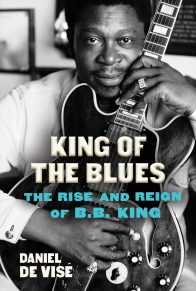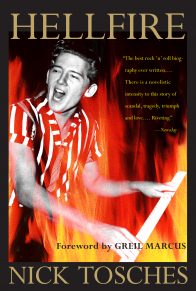The first measures unfold with the storytelling power of a master improviser. A journey has begun, but it’s as if composition is taking place on the spot. The deep-toned strings take us back to the 1700s. The soundworld is happy. The jauntiness youthful. Discovery is in the air. After a pause that contemplates the future, the cello resumes with aching soulfulness. Things will not come easily. The notes are murmured, stated with courtly purpose, and blasted through with rapture. We peak higher. A new vista opens up, rhapsodic resolution, the descent a soft landing.
As I listened to the music on headphones, shaded by the palms and pines of a lush garden, the shimmering waves of the nearby Mediterranean seemed to roll perfectly in time with the prelude of the first cello suite.
There was no more fitting place to appreciate the music. Although the Cello Suites first flowed from the composer’s quill sometime in the early 1700s, it was Casals who, two centuries later, made them famous.
My own discovery of the Cello Suites had taken place one autumn evening in 2000, a “Bach Year” marking two and a half centuries since the death of the composer. I was in the audience at Toronto’s Royal Conservatory of Music to hear a cellist I’d never heard of play music I knew nothing about.
I had no reason to be there aside from a concert listing in a local newspaper, idle curiosity, and the fact that I was staying at a nearby hotel. But I might have been searching for something without knowing it.
Sometime earlier I had ended a stint as pop music critic for a daily newspaper in Montreal, The Gazette, a job that had filled my head with vast amounts of music, much of which I didn’t want to be there. The Top 40 tunes had overstayed their welcome in my auditory cortex, and the culture surrounding rock music had worn thin. I still wanted music to occupy a central place in my life, but in a different way. The Cello Suites, as it turned out, offered a way out of the jam.
The program notes for the recital by Laurence Lesser, a distinguished cellist from Boston, explained that “amazingly, for a long time,” the Cello Suites were seen as only acollection of exercises. But since Casals had started playing the suites at the dawn of the twentieth century, “we now know how lucky we are to possess these extraordinary masterworks. What most music-lovers don’t know, however, is that no known composer’s manuscript of these works exists . . . There exists no truly reliable source for the suites.” This got the journalistic wheels in my head turning: what had happened to Bach’s manuscript?
It was in the small German town of Cöthen in 1720 that the Cello Suites were said to have been composed and inscribed by Bach’s raven-quill pen. But without his original manuscript, how can we be certain? Why was such monumental music written for the cello, a lowly instrument usually relegated to background droning in Bach’s time? And given that Bach regularly rewrote his music for different instruments, how can we even be sure that the music was written for the cello?
From my seat in the Royal Conservatory concert hall, the lone figure producing this massive sound with such modest resources seemed to defy the musical odds. Only one instrument, and one anchored to a very low register, the cello appeared unequal to the task, as if some supreme composer had devised an overambitious score, an ideal text, with little regard for the crude vehicle that was to carry it out.
Watching Laurence Lesser expertly play the suites, I was struck by the bulkiness of his instrument—in former times called the violoncello, or cello for short—bringing to mind some lumbering peasant from a medieval string kingdom, rough-hewn and primitive, nowhere near sophisticated enough for the refined music it was playing. But on closer examination I could see the intricately carved wooden scroll and the curvaceous sound holes, shaped like some exquisite baroque time signature. And what was coming out of those sound holes was music more earthy and ecstatic than anything I’d ever heard. I let my mind wander. What would the music have sounded like in 1720? It was easy to imagine the violoncello proving itself in aristocratic company and seducing the powdered wigs. But if the music is so uniquely captivating, why were the Cello Suites virtually never heard until Casals discovered them?
For nearly two centuries after this baritone masterwork was composed, only a small circle of professional musicians and Bach scholars knew of this epic music. And those who did thought they were more technical exercises than anything fit for the concert hall.
The story of the six suites is more than musical. Politics shaped the music, from the Prussian militarism of the eighteenth century to the German patriotism that propelled Bach’s fame a century later. When European dictatorships ruled in the twentieth century, the notes became so many bullets in the anti fascist cello of Casals. Decades later, Mstislav Rostropovich played the Cello Suites against the backdrop of a crumbling Berlin Wall.
After Casals gave the music mass appeal—which happened long after his discovery of the music—there was no stopping the suites. There are now more than fifty recordings in the catalogue and upwards of seventy-five performance editions of the music for cellists. Other instrumentalists found they could transcribe and tackle the Cello Suites: the flute, piano, guitar, trumpet, tuba, saxophone, banjo, and more have all essayed the music with surprising success. But for cellists the six suites quickly became their alpha and omega, a rite of passage, the Mount Everest of their repertoire. (Or the Mount Fuji: in 2007 Italian cellist Mario Brunello climbed to the summit, nearly 3,750 metres above sea level, where he played selections from the Cello Suites, declaring that “Bach’s music comes closest to the absolute and to perfection.”)
The music is no longer considered overly challenging for the average listener. New recordings of the suites regularly win “disc of the year” honours. And the scratchy old mono recording made by Casals continues to be a top seller among historical titles.
But it is not lighthearted music. A cursory scan of recent performances shows that the suites were played at two major memorial services in England held in honour of the victims of 9/11, at another memorial marking the Rwandan genocide, and at various high profile funerals, including the massive one held for the former publisher of The Washington Post. I recall one occasion, not long after I was first smitten by the suites, when I was upbraided by a dinner party hostess for putting “funereal music” in her disc player.
If the music has often been employed for sad occasions, it is in large part explained by the dark, moody tones of the cello, plus the fact that the Bach suites require one lonely instrument.
Yet the cello is the instrument that most closely resembles the human voice; it is capable of more than just doom and gloom. The Bach suites, most of which are written in major keys, have their fair share of upbeat merrymaking, devil-may-care attitude, and ecstatic abandon. The roots of the music are in dance—most of the movements are in fact old European dances—and dancers have been quick to choreograph the suites. Mikhail Baryshnikov, Rudolf Nureyev, Mark Morris, and Taiwan’s Cloud Gate Dance Theatre, among others, have all moved to its propulsive rhythms.
The music gets around. Cellist Yo-Yo Ma produced six short films that used gardening, architecture, figure skating, and kabuki to illustrate the suites. The rock star Sting made a short film in which he played the first prelude on a guitar while an Italian ballet dancer enacted the melody. And the suites have been heard in several films, most notably (and, alas, gloomily) in several by Ingmar Bergman, as well as in Master and Commander, The Pianist, and the television series The West Wing.
The music can be found on discs as varied as Classic FM Music for Studying, Bach for Babies, and Tune Your Brain on Bach, not to mention Bach for Barbecue. The Bach suites have been cited by one opera singer as her favourite music for cooking. Snippets of the music are widely available as cellphone ring tones.
But the Cello Suites haven’t quite gone mainstream. They remain “classical” music after all, and have the refined aroma of music for connoisseurs. They were considered exactly that by reviewers—”an item for connoisseurs”—when Casals’ pioneering recordings were first released back in the early 1940s. “They are cool and pure and lofty,” wrote the critic for the New York Times, “set forth with the simplicity that distinguishes searching art.” They still have serious status, fueled by highbrow reviews that suggest the suites ‘represent some sort of apex of Western musical creativity” or that the music “has a purity and intensity that approach the Japanese yet remains more accessible to Western ears.”
The idea to write a book about the Bach suites, one that is not aimed at classical connoisseurs, came to me when I first heard three of the Cello Suites in that Toronto recital by Laurence Lesser. The idea was vague, but I had a strong sense there was a story there, somewhere, and decided to follow in the footsteps of the notes.
Since then I have heard the suites performed on Spain’s Costa Dorada, on the grounds of Casals’ former villa, now a lovely museum devoted to the cellist. I listened to a young German cellist play the suites in a Leipzig warehouse, not far from where Bach is buried. Matt Haimovitz, a one-time wunderkind, gave a rollicking account of the music at a roadhouse juke joint in the Gatineau Hills north of Ottawa. I attended a master class on the suites given by the eminent Dutch cellist Anner Bylsma at a music camp perched on the banks of the St. Lawrence River. I was at Lincoln Center for Pieter Wispelwey’s marathon playing of all six suites, and at a Manhattan conference on Bach in the twenty-first century, where the suites were gorgeously performed on marimba (marimBach!). At a high rise apartment building on the outskirts of Brussels, I heard a Russian émigré violinist play the suites on an intriguing five-string fiddle that he’d built, convinced it is the mysterious instrument lost to history that Bach really composed the suites for.
The compact discs have piled up—from the Old Testament recordings that Casals made back in the 1930s to the slickly produced discs of recent years, including “authentic” early music approaches and the suites rendered on any number of instruments, in jazzified form, or blended with traditional South African music. In 2007, three centuries after composition, the Cello Suites hit number one on the iTunes classical music chart with a recording by Rostropovich. (Bach seemed to be boasting to the iPod generation that month: another version of the Cello Suites was on the same Top 20 chart, not to mention three other works by the composer.)
By then the music had become a story for me. And it seemed only natural for the story to be structured along the lines of the music. The six Cello Suites each contain six movements, starting with a prelude and ending with a gigue. In between are old court dances—an allemande, a courante, and a sarabande—after which Bach inserted a more “modern” dance, either a minuet, a bourree, or a gavotte. In the pages that follow, Bach will occupy the first two or three movements in each suite. The dances that come afterwards are earmarked for Pablo Casals. And the gigues that close each suite will be reserved for a more recent story, that of my search.
If I’ve been on the trail of the music for this long it’s because there’s so much to hear in the Cello Suites. The genre may be baroque, but there are multiple personalities and mood swings within the suites. I hear barnstorming peasant tunes and postmodern minimalism, spiritual lamentations and heavy metal riffs, medieval jigs and spy movie soundtracks. The ideal experience for most listeners may be as I first heard the music, without preconceptions. But connect the notes, and a story emerges.













